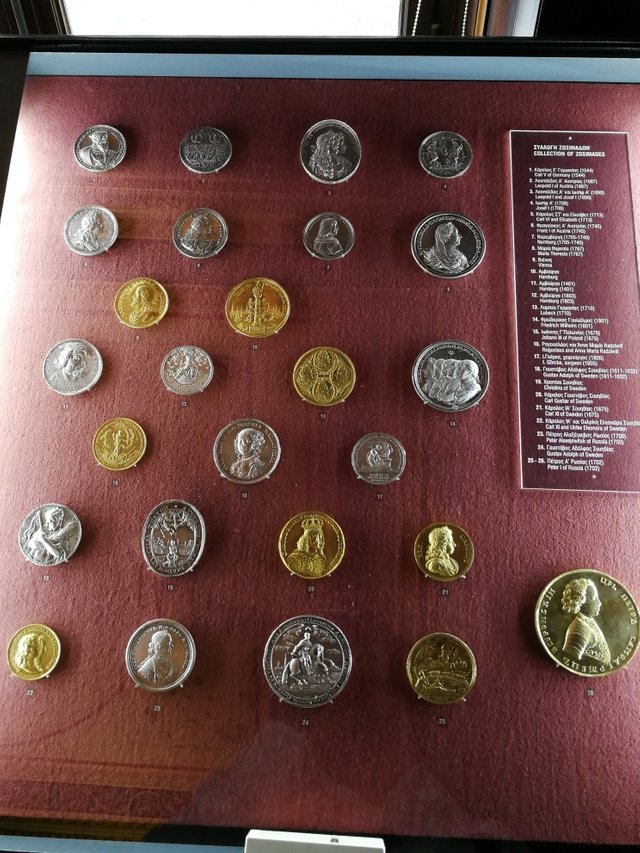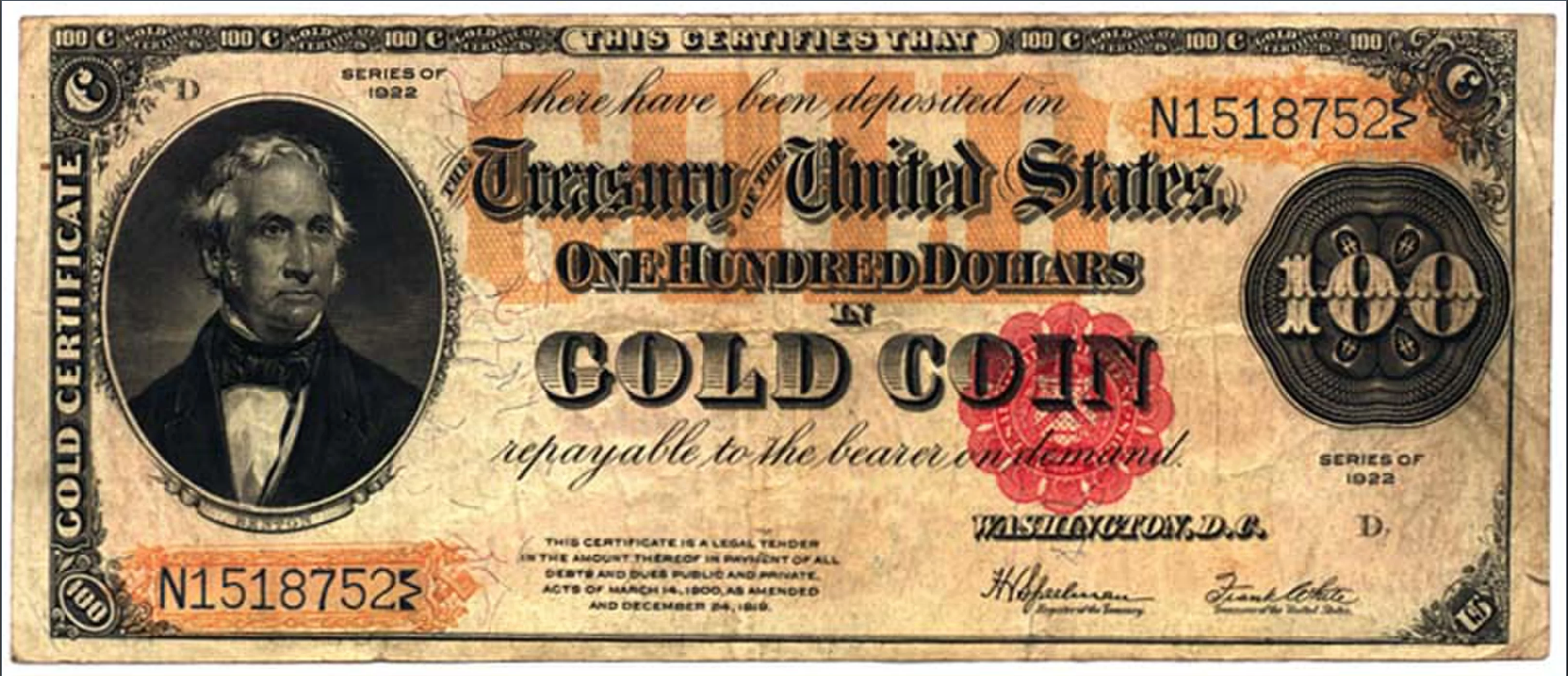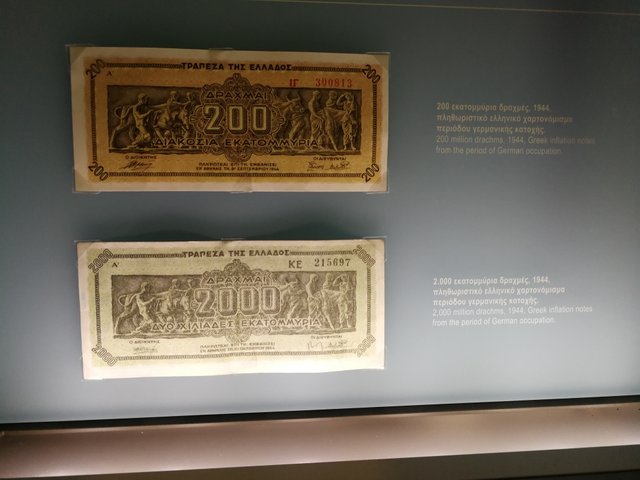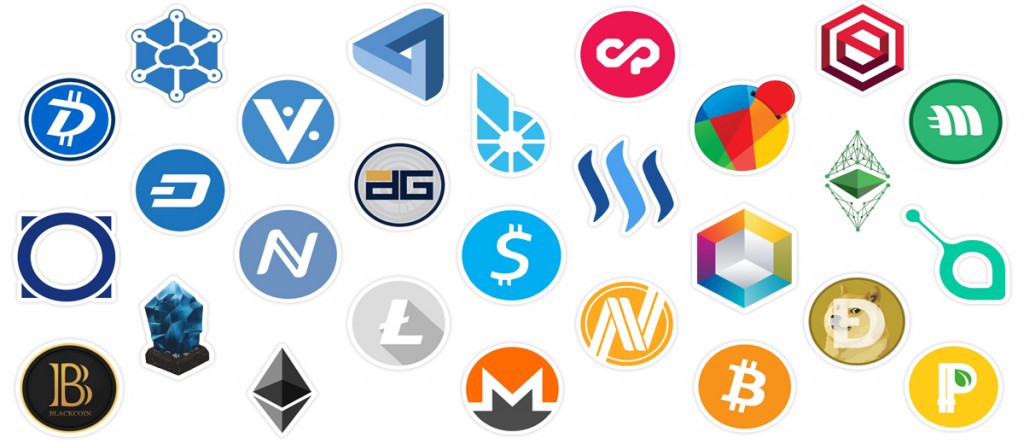The History of Money Part 3. Fiat Money and Beyond
In a previous post, we saw the evolution of money and the creation of Banks, so it is time to visit modern times and finish this journey with a look at types of money of our digital age. If you want to know the characteristics and properties of money you can read this post.

Definitions
First of all, it is a good time to see some useful definitions. We read these words all the time and it's good to know what is their meaning.
Commodity money: money that has some other non-monetary use and value (e.g. gold for jewelry). Both primitive and modern money can be commodity money.
Gold standard: a form of commodity-backed money or, under some definitions, representational money, where paper notes were redeemable for gold ( or in other cases silver).
Fiat money: any legal currency defined as money by government law or regulation which is not backed by a physical commodity. Fiat money are issued only by governments. It's the money we all know and use : dollars , euros etc. The term fiat derives from the Latin fiat and means "let it be done".
Legal tender: a payment method which is recognized as legal when it is offered to meet a financial obligation. Is any official medium of payment recognized by law that can be used to extinguish a public or private debt, or meet a financial obligation. The national currency is legal tender in practically every country. A creditor is obligated to accept legal tender toward repayment of a debt.

Various golden and silver coins
Money Backed by Precious Metals
Gold was officially made the standard of value in England in 1816. At this time, guidelines were made to allow for a non-inflationary production of standard banknotes which represented a certain amount of gold. Banknotes had been used in England and Europe, but their worth had never been tied directly to gold.
During the American Civil War, the Federal Government issued United States Notes, a form of paper fiat currency popularly known as 'greenbacks'. Their issue was limited by Congress just slightly over $340 million. During the 1870s, withdrawal of the notes from circulation was opposed by the United States Greenback Party. It was termed as 'fiat money' in an 1878 party convention.
It was around that time the US dollar (USD) replaced the pound sterling (GBP) as the most important reserve currency in the world and, as a consequence, the Federal Reserve became the key Central Bank in the world. Like the GBP, the USD exhibited a long history of fluctuating through periods of convertibility and non-convertibility to metals throughout its history. These are the main periods :
1792-1834: Basically Silver Standard
1834-1862: Basically Gold Standard
1862-1879: Fiat Paper Money
1879-1933: True Gold Standard
1934-1973: Quasi-Gold Standard
1971-present day: Fiat Paper Money
A gold standard is a monetary system in which the standard economic unit of account ( currency or money more loosely ) is based on a fixed quantity of gold. The main feature of the gold exchange standard is that the government guarantees a fixed exchange rate to the currency of another country that uses a gold standard , regardless of what type of notes or coins are used as a means of exchange. This creates a de facto gold standard, where the value of the means of exchange has a fixed external value in terms of gold that is independent of the inherent value of the means of exchange itself. When paper money is backed by precious metals ( gold or silver ) then it can be exchanged for a certain amount of that metal and the precious metals are supposedly stored and kept safe by the government.

US dollar redemable for gold. source
Fiat Money Backed by Faith
The massive Depression of the 1930s, felt worldwide, marked the beginning of the end of the gold standard. In the United States, the gold standard was revised and the price of gold was devalued. This was the first step in ending the relationship altogether. The British and international gold standards soon ended as well, and the complexities of international monetary regulation began.
Toward the end of World War II, at the Bretton Woods conference (July 1944), many major world economies attempted to regulate future intra-country financial flows and currency 'competition' through fixed exchange rates pegged to the USD, itself pegged to gold. The newly formed International Monetary Fund would act as a bridge for payment imbalances among the ratifying countries . This gold standard was not available to citizens, just to counter-party Central Banks so it is not considered a full gold standard and thus called Quasi-Gold standard.
The International Monetary Fund was set up to assist in the exchange process and to provide
foreign exchange to help nations keep their exchange rates fixed. The peg to gold ran into severe difficulties in 1968. The USA, abandoned the Bretton Woods agreement in August 15, 1971. Gold could no longer be exchanged at a fixed rate with US Dollars (also called the "Nixon Shock"). Today, the USD and all the currencies for that matter, is a 100% fiat currency with no redeemability into any commodity assets, managed by the Federal Reserve, the Central Bank of the United States. Another characteristic of modern fiat currencies is that they are managed with a bias toward slight inflation (targets are usually 2-3% per year) in order to discourage hoarding of money, stimulate economic activity and maintain full employment.
In other words we all believe that the money we use have some kind of value and we trust our governments to implement the right monetary policies to maintain that value. Good to know , right ?

200 million drachmas . Greek inflationary money. Sometimes , something goes wrong with money ...
Bitcoin and Digital Currencies
And since our money have no actual intrinsic value, are backed by faith and are created out of thin air the next step is to go fully digital. This idea started at the end of the previous century without real success, until Bitcoin was created in 2009. This new kind of money based on blockchain technology promises to change the way we see and interact with money.
Bitcoin is private and decentralized that means it is not issued by any official state authority or centralized issuing party / counter-party, instead units are issued to a decentralized group of users. It is digital and fully electronic currency, so there are no physical coins or notes and there are no fake coins, because anti-counterfeiting is conducted through cryptography. It has fixed Supply and the money supply is regulated from the protocol itself and only 21,000,000 bitcoins (BTC) will ever exist. The monetary policy is transparent and available to everyone to examine and verify, as the protocol is based on open source code and is based on consensus. Each user chooses to agree on the proposed set of rules, propose their own, or recreate the whole network with their own set, but independently from the original (as the changes would not be compatible). Key characteristics (like money supply) can't change unless a majority of participants in key parts of the system vote to change them. These are the basic features of Bitcoin.

Image source
This series of articles started with examining what makes money, money so it is appropriate to end it by examining where Bitcoin stands in terms of that characteristics.
Bitcoin as a Medium of Exchange
Bitcoin is promising as a digital medium of exchange, because it is highly durable and there is no way for it to degrade/break (it is just code) and the blockchain is backed up on thousands of computers globally. It is highly portable, since there are no intermediaries worldwide, the initial confirmation takes about 10 minutes and irreversibility in an hour. It is also fungible: all bitcoins have the same value, regardless of who owns them or what their history is and can be exchanged for products/services. Each bitcoin can be divided into 100 million units and that makes it highly divisible and as we mentioned it is resistant to counterfeiting. Bitcoin funds are assigned to a specific address and cannot be duplicated. It takes a huge amount of computing power to double spend Bitcoin.
Bitcoin as a Unit of Account
For the time being Bitcoin cannot be a unit of account because of significant fluctuations in its price. But the price could be more stable over time, if regulatory environment will become clear and markets between Bitcoin and fiat currency will become more liquid and perhaps more stable.
Bitcoin as a Store of Value
Bitcoin and cryptocurrencies in general cannot yet be considered a good store of value because of the significant fluctuations in price, even though the same applies to a lesser degree for traditional currencies or any other asset. We all have seen the high volatility in Bitcoin markets, but many people believe that prices will stabilize over time.
That was it. Hopefully after this series of posts we have a better understanding of money and learned things along the way. I certainly did.
And until we have all the digital or fiat or whatever money we want…
Be Healthy, Smile and Steem.

Recourse and additional read:
[1] Introduction to Digital Currencies MOOC 9 from University of Nicosia.
[2] https://en.wikipedia.org/wiki/History_of_money
[3] http://www.pbs.org/wgbh/nova/ancient/history-money.html
[4] https://www.investopedia.com/articles/07/roots_of_money.asp
[5] http://gastruckdriver.blogspot.gr/2012/11/the-first-european-paper-money.html
[6] https://www.investopedia.com/terms/l/legal-tender.asp
[7] https://en.wikipedia.org/wiki/History_of_money
[8] https://en.wikipedia.org/wiki/Gold_standard
Being A SteemStem Member
As I said in one of the previous money articles. Its so well written and easy to understand dude. Magazine material
Magazine ... Could be ... But how about an ebook ;)
Nice, thanks for sharing!
Thanks for dropping by . :)
Great series @iliasdiamantis! Here's to the future of trust-less and transparent currencies backed by blockchain tech! 🚀
Thank you @kenistyles . Here's to a future with more tokens than we can handle. :)
Poli wraio...
You really did a good job, keep it up!
Thank you . I'm giving my best.
Congratulations! This post has been upvoted from the communal account, @minnowsupport, by diamantis from the Minnow Support Project. It's a witness project run by aggroed, ausbitbank, teamsteem, theprophet0, someguy123, neoxian, followbtcnews, and netuoso. The goal is to help Steemit grow by supporting Minnows. Please find us at the Peace, Abundance, and Liberty Network (PALnet) Discord Channel. It's a completely public and open space to all members of the Steemit community who voluntarily choose to be there.
If you would like to delegate to the Minnow Support Project you can do so by clicking on the following links: 50SP, 100SP, 250SP, 500SP, 1000SP, 5000SP.
Be sure to leave at least 50SP undelegated on your account.
You got a 1.65% upvote from @buildawhale courtesy of @iliasdiamantis!
If you believe this post is spam or abuse, please report it to our Discord #abuse channel.
If you want to support our Curation Digest or our Spam & Abuse prevention efforts, please vote @themarkymark as witness.
This post has received gratitude of 2.15% from @appreciator courtesy of @iliasdiamantis!